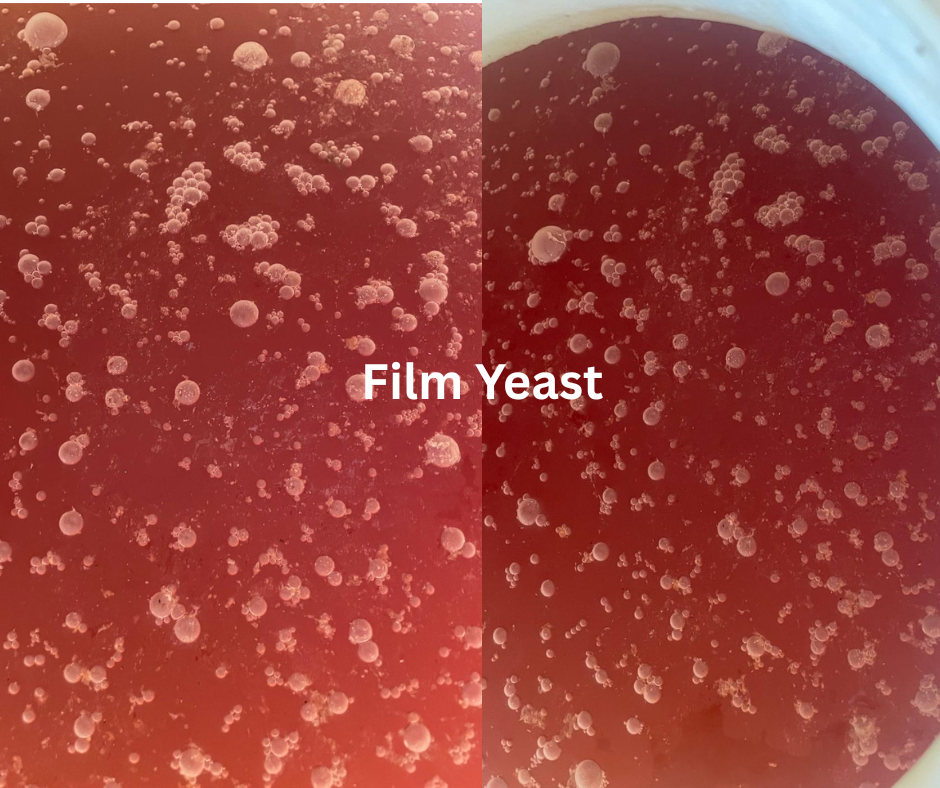Common Cider Faults and How to Prevent Them
Common Cider Faults and How to Prevent Them

Making cider is a delightful and rewarding process, but sometimes things can go awry. Here, we'll explore some common cider faults, their causes, and how to prevent them to ensure your cider remains crisp and delicious.
1. Acetification
What it is: Acetification occurs when cider turns vinegary due to the formation of acetic acid. This is often perceived as a sharp, sour taste and a vinegary aroma.
Causes: This fault is typically caused by the presence of Acetobacter bacteria, which thrive in oxygen-rich environments. It can also result from film yeast or Brettanomyces infection.
Prevention: To prevent acetification, ensure your fermentation vessels are sealed properly to minimize oxygen exposure. Regularly check for and eliminate any sources of contamination, such as fruit flies. Using sulphites can also help inhibit bacterial growth
2. Cider Sickness
What it is: Cider sickness, caused by Zymomonas bacteria, results in a cider that smells like green apples or bananas and appears milky
Causes: This fault occurs when Zymomonas bacteria ferment sugars, producing acetaldehyde and other compounds
Prevention: Maintain a clean and sanitised environment. Increase the acidity of your cider to 0.5% and add active fermenting yeast to outcompete the bacteria. Always sterilize equipment thoroughly before reuse.
3. Discolouration
What it is: Discolouration in cider can manifest as a greenish or blackish tint, often accompanied by metallic tastes
Causes: This is usually due to the presence of metallic ions, especially iron or copper, which can leach into the cider from equipment
Prevention: Use equipment made from non-reactive materials like stainless steel. Ensure all equipment is properly cleaned and free from rust or corrosion
4. Film Yeast
What it is: Film yeast forms a powdery film on the surface of the cider, leading to off-flavours and spoilage
Causes: This yeast thrives in aerobic conditions and can contaminate slow or un-sulphured fermentations
Prevention: Keep your fermentation vessels sealed to limit oxygen exposure. Regularly check and clean your equipment to prevent contamination
5. Mousiness
What it is: Mousiness is a fault that imparts a distinctive mouse cage or cracker-like aroma and taste to the cider
Causes: This fault is often caused by lactic acid bacteria under certain conditions
Prevention: Maintain a low pH (below 3.5) and use sulphites to inhibit bacterial growth. Once mousiness is present, it is difficult to remove, so prevention is key
6. Ropiness
What it is: Ropiness makes cider appear oily or slimy due to the production of polysaccharides by lactic acid bacteria
Causes: This fault is caused by certain lactic acid bacteria that produce a slimy glucan
Prevention: Ensure good sanitation practices and monitor the fermentation process closely. Using sulphites can help prevent bacterial growth
7. Sulphur Smells
What it is: Sulphur smells, often described as rotten eggs or burnt matches, can be quite off-putting
Causes: These smells are usually caused by stressed yeast during fermentation
Prevention: Use yeast nutrients to support healthy fermentation and avoid stressing the yeast. If sulphur smells develop, try degassing the cider or using copper to react with the sulphur compounds
By understanding these common faults and their causes, you can take proactive steps to prevent them and ensure your cider remains in perfect condition. We're here to help, call us if you need any help with your cider making. Tel: 01404 890093 or email: sales@vigopresses.co.uk.
